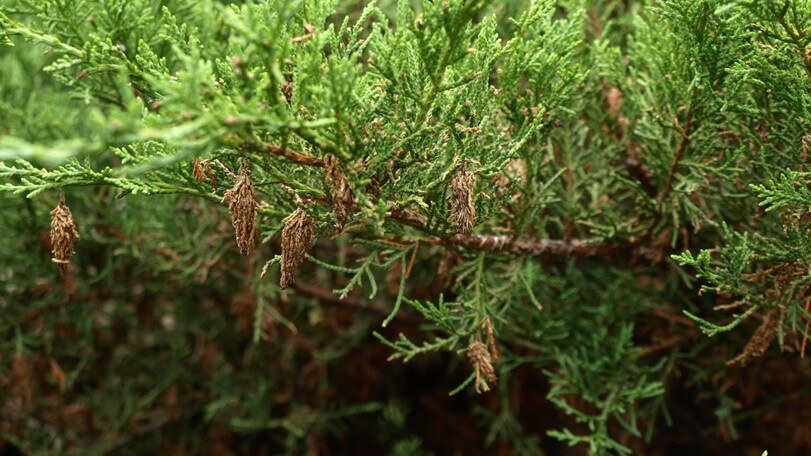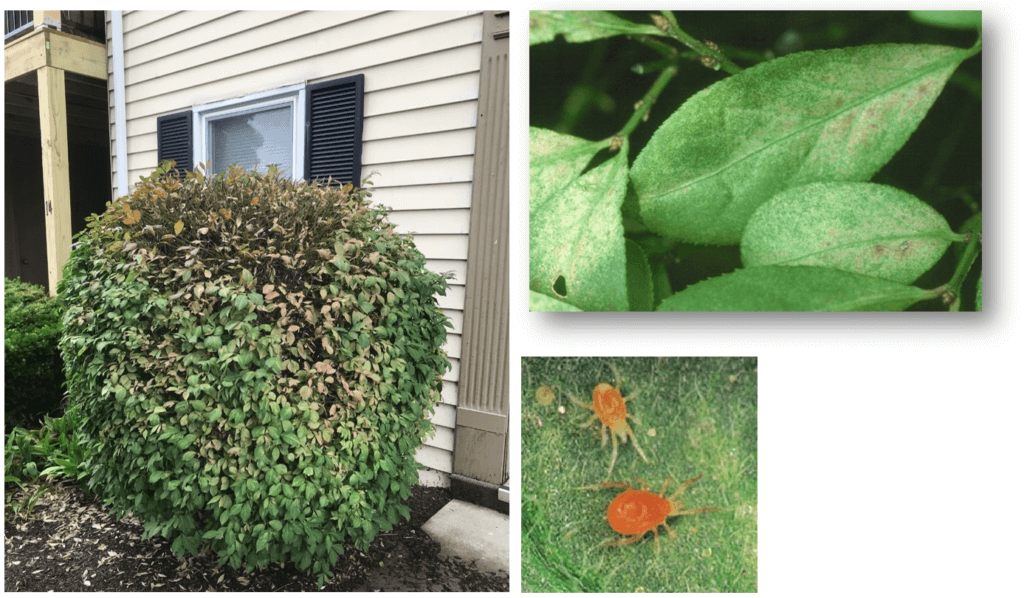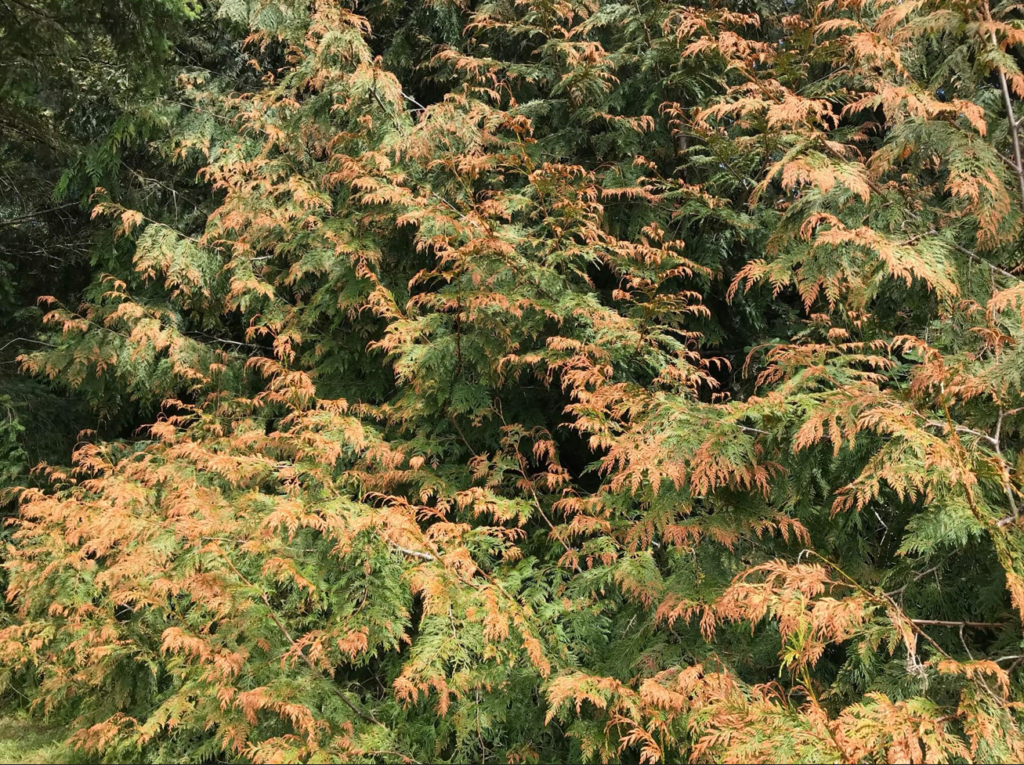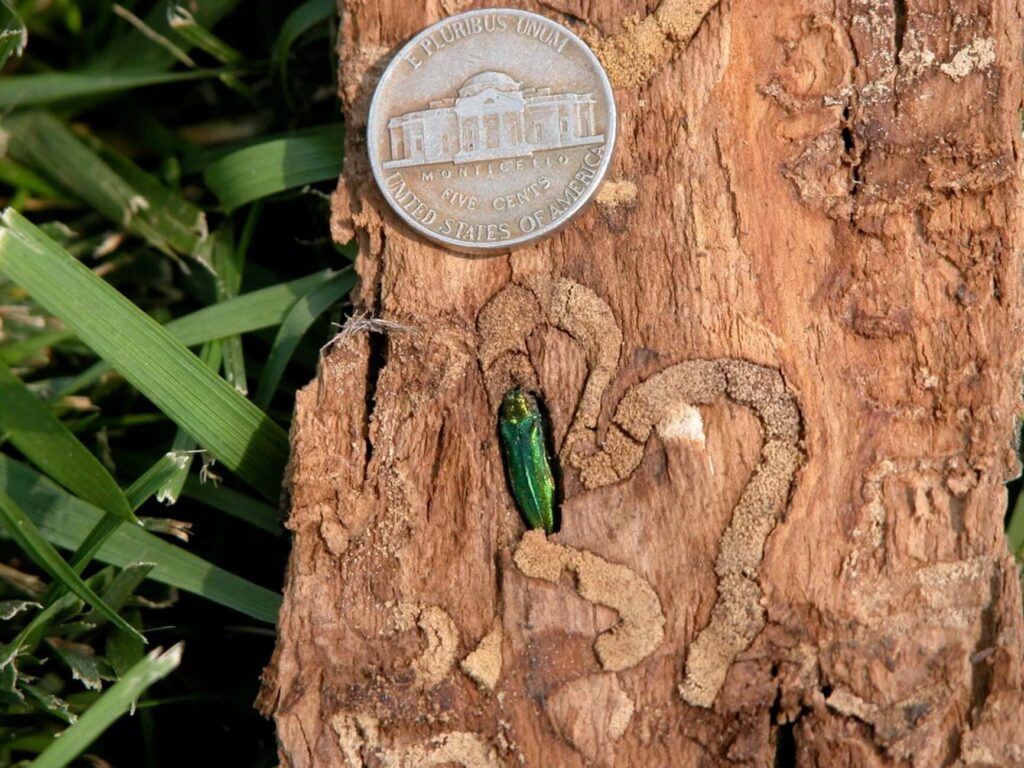It’s hard to believe during these hot days that our growing season is coming to an end as we turn the corner to head into fall, cooler days, and the turning of leaves. This growing season has been a harsh one for our trees and maybe you are seeing the symptoms of that on some of your landscape plants. In this blog we are going to give an overview of the Plant Health Care season, what we saw a lot of, and how you can better care for your trees and shrubs.
Bagworms Plant Health Care

These are by no means a new pest for our area, but one that should be mentioned due to its prevalence. Bagworms can do much damage to many trees, especially the evergreens they favor. At this point in the season, bagworms have fully enclosed in their bags, and we are unable to spray them effectively. The females will be laying eggs in their bags which will emerge by the hundreds in late May/early June of next year.
The best defense against these pests is to have an arborist inspect your property periodically throughout the growing season and spray them while they are still small and before they do much damage.
Mites

Mites are a common insect in our area, but the heat from this summer extended their activity and made them a bigger problem than we usually see. These minuscule pests feed on the sap and juices of plants and can cause discoloration or defoliation to some of your landscape shrubs. We typically see the most damage from mites on our customers’ Alberta Spruces or Burning Bushes.
Mites populate very quickly and have many generations per season. Treatment requires multiple miticide sprays to control the ever-growing populations. Another option in control is using a heavy stream from a water hose to knock off mites periodically.
Heat & Drought Damage

We saw a great deal of damage this growing season as a result of the Missouri heat this summer. Some trees greatly struggled due to the lack of rainfall accompanied by the heat. Keeping trees on a proper watering schedule is critical to their health and survival when we have unusually harsh weather.
However, we see some customers swing the pendulum in the opposite direction and overwater their trees which can be just as detrimental, causing root rot and eventually death.
Watering guidelines for your trees.
If we don’t get any rain:
- Good slow soaking (10-15 gallons per 5″ diameter).
- 80+ degree weather=every 3rd day.
- 65-70 degrees=every 5th day.
- 50-60 degrees=every 7 days.
- 35-45 degrees=every 14-15 days.
**Sprinklers are NOT sufficient for watering trees. We recommend a dripline or bringing a hose to the root zone of the tree for watering.**
To avoid over-watering: Do the finger test! Stick your finger as far down into the soil at the root zone. If it is still damp, don’t water it just yet.
If you have questions about tree watering or the health of your trees, give us a call today to discuss.
Emerald Ash Borer

This beetle has been devastating Ash trees across the United States and has recently made its way to our area. We have seen many Ash trees in decline or dead due to tunneling from the larvae stage of this insect. If you have an Ash tree you want to keep, we recommend an injection that protects the tree for 2 years.
Plant Health Care
These are just a few of the issues we came across this Plant Health Care season. Having regularly scheduled inspections from an arborist is one of the best ways to make sure your trees and shrubs stay healthy. Your landscape is an investment, and we strive to educate and inform our customers on how to best care for their trees and shrubs. Give us a call today

